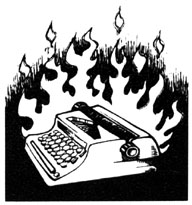I have before me -- tilted against the base of an adjustable stool that does double duty, from time to time, as my writing table -- the hardback of Sergio Chejfec’s Baroni A Journey (translated by Margaret Carson, published by Almost Island), a sparse and delicately barren telling of his encounters with three artists in Venezuela – Juan Andrade, Tomás Barazarte and, first among equals, Rafaela Baroni. Each makes painted wood carvings – sometimes devotional, sometimes not -- and Chejfec chronicles buying a number of their works, so he is present in the book not only as visitor, narrator, traveler, outsider, but as collector/customer/consumer as well.
In its structure, the book emulates the way Baroni's carvings take shape from the grain and splits in the materials with which she works. Her life -- at once harsh and harmonious -- has merged with her artistic practice. And so, in addition to carving, Baroni also conducts psychic readings of people’s national ID cards and twice-yearly (re)enactments of her own death, which can perhaps be interpreted as performative commemorations of a number of prolonged death-experiences the artist had in life.
Chejfec's conversations with Baroni are mostly plodding, yet oddly sublime. Of one chat in her garden, he writes: “And yet again, I found myself once more in a situation of the sort that happens to me repeatedly, relating to different universes of things, the moment when an initially slight uninterest announces the impending occupation of my senses and I realize it's no longer possible to do anything to save myself, until I end up succumbing to confusion, in reality a disintegration of my sensibility.”
The book also touches on Chejfec’s feelings about the death of his telephone friend, the poet Juan Sánchez Peláez, whose body he viewed at a funeral home, laid out in a new safari jacket the dead man seems to have bought specifically for the occasion, and who wrote, in a poem Chejfec quotes, “I am dead and I live / alive and dead at once. / Without lamentation. / With an almost absurd patience/ I live / walled-up or hidden / free / dead.”
Chejfec also reflects on the death of some fighting cocks owned by a friend named Barreto (Chejfec identifies him solely by last name, but this may be the poet Igor Barreto), who breeds gamecocks but refuses to watch them fight. About those birds, Chejfec notes, Barreto has written, “In their cages, the birds scratch with human / curiosity at every detail.”
Chejfec's scratching curiosity extends to the afficionados around the cock pit, and particularly those who, unwilling to concede the reality of impending death, make what he calls the 'Bolivar' bet, wagering on a mortally wounded bird. “No one writes
off the fighting cock that seems defeated,” he writes.
A Bolivar bet, of course, is a kind of mortuarial promise or lure and as such is an enigma, a gesture from the past that points to fulfillment or verification in the future -- and whether that anticipated fulfillment or verification will come is an open life-or-death question.
I have now finished the journey of the book – though not that other journey, for every time I read the last line of a text and put the volume down, I feel both ecstatic and depressed, not knowing if I'm at an end or a beginning or both. And in this indeterminate state, I consulted the electric oracle and learned that Rafaela Baroni died last month at age 85 (though El Universal mistakenly said 86), and that so far there have been no (re)enactments -- a verification and vindication of the power of her performances.
Chejfec’s voyage proceeds by accretion of detail and subtle shadings of thought across time and space. The book is a durational performance, demanding attention because of how imperceptible its movement is. In this, it exemplifies what Chejfec writes of a sloth climbing a tree: “it's not easy to keep your eyes on a sloth for an extended time span, because the slowness engraved a kind of weariness on its movements and this made the event seem of little importance. That's why you would turn your eyes someplace else, or would simply get distracted, and later when you'd look again the animal would still be in the same place, or at least that's what it would seem like, as if the intermission hadn't occurred.” This makes Baroni A Journey close to life, and, with its sloth-like cadence of immobility, to death as well, which, contra-Wittgenstein, Baroni's art made part of life.
As Chejfec puts it, “each thing is a kind of signal; an anchor, even an albatross, but also a promise owed by the past.”







